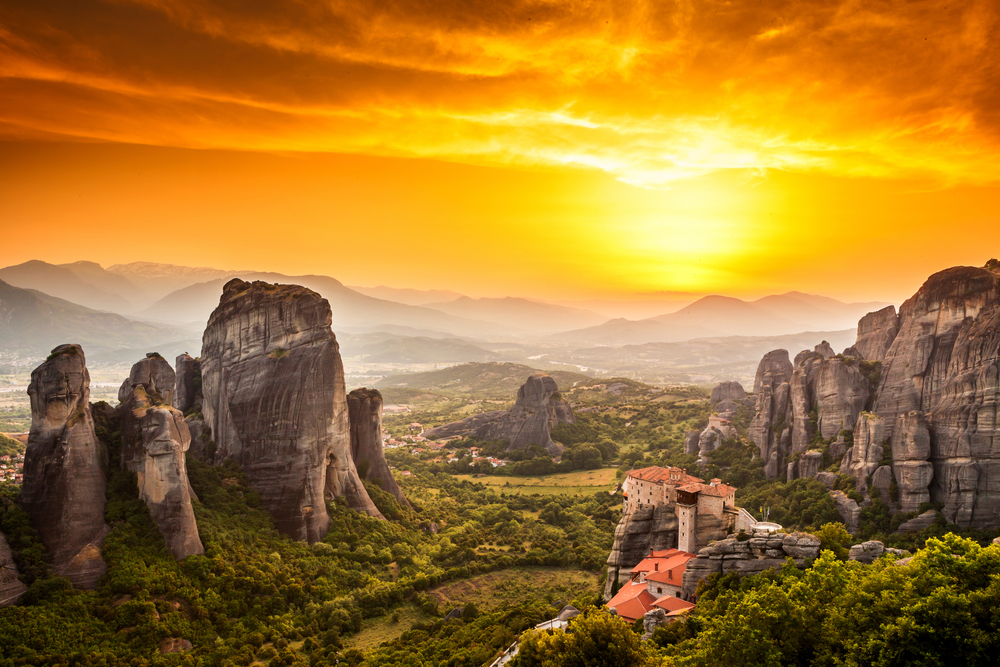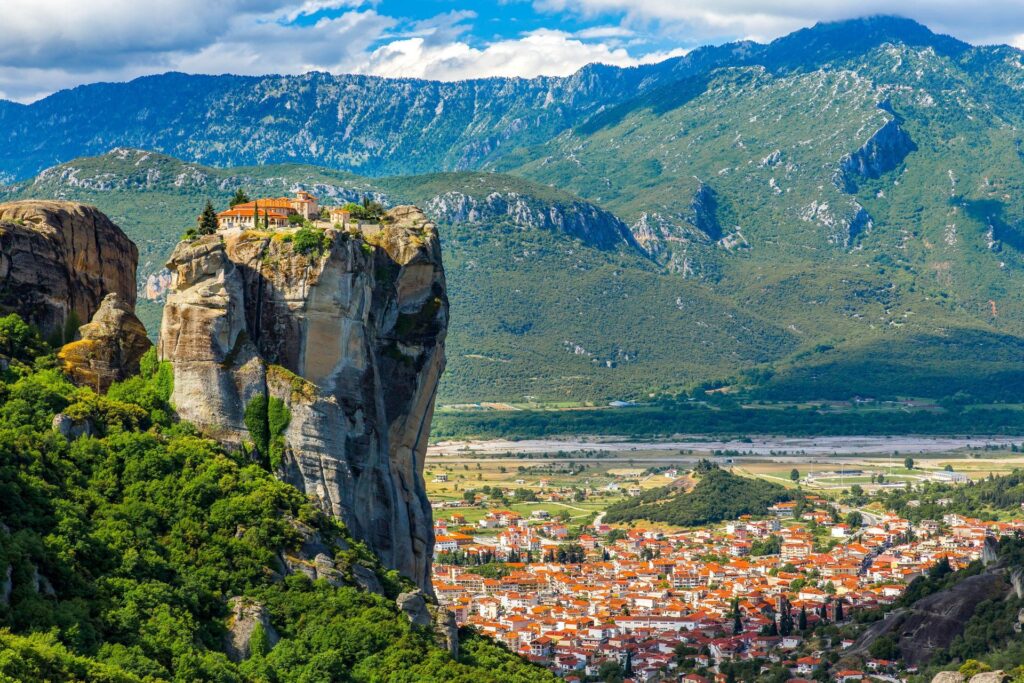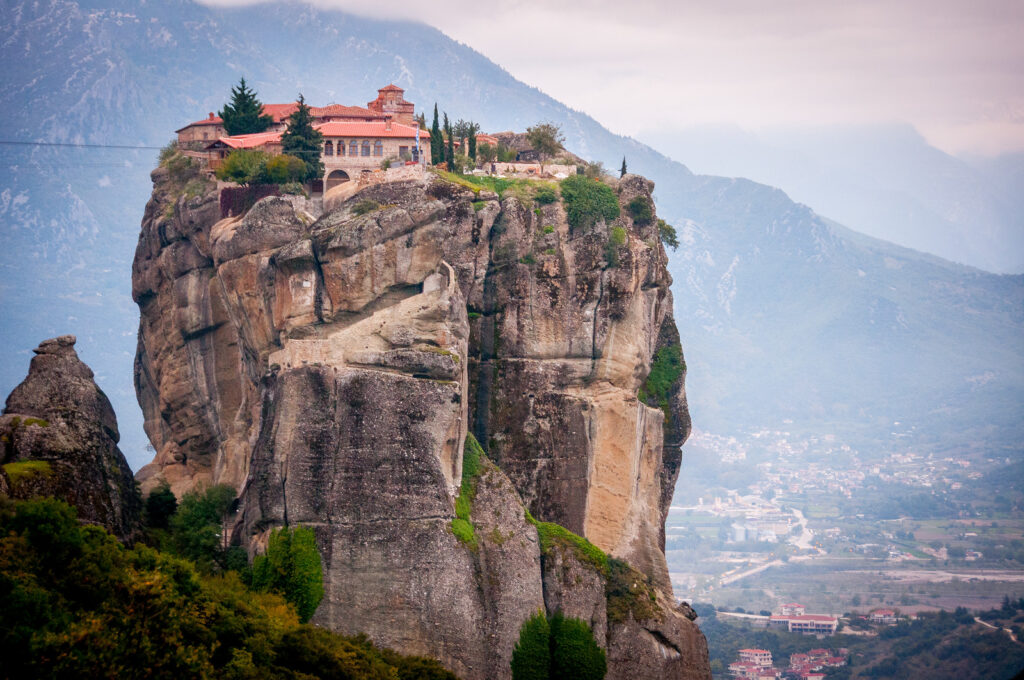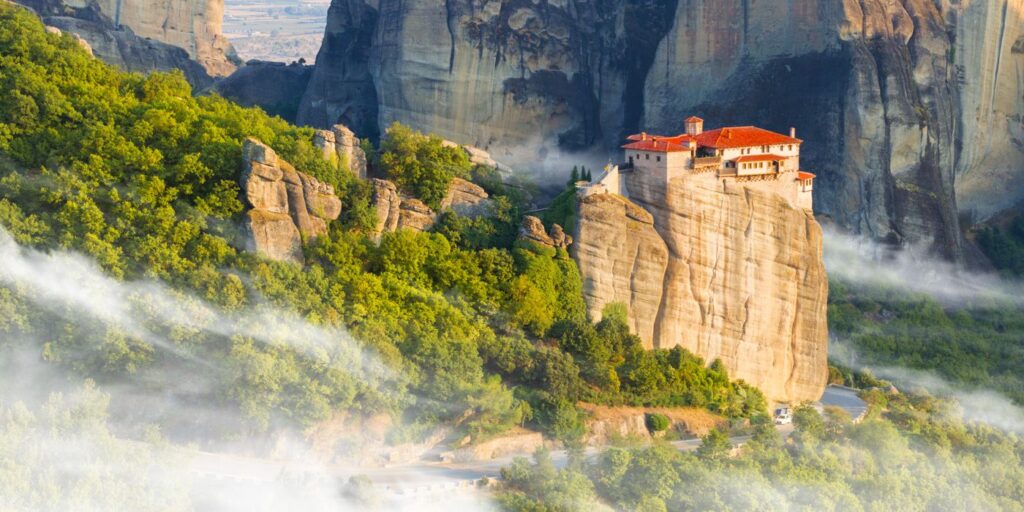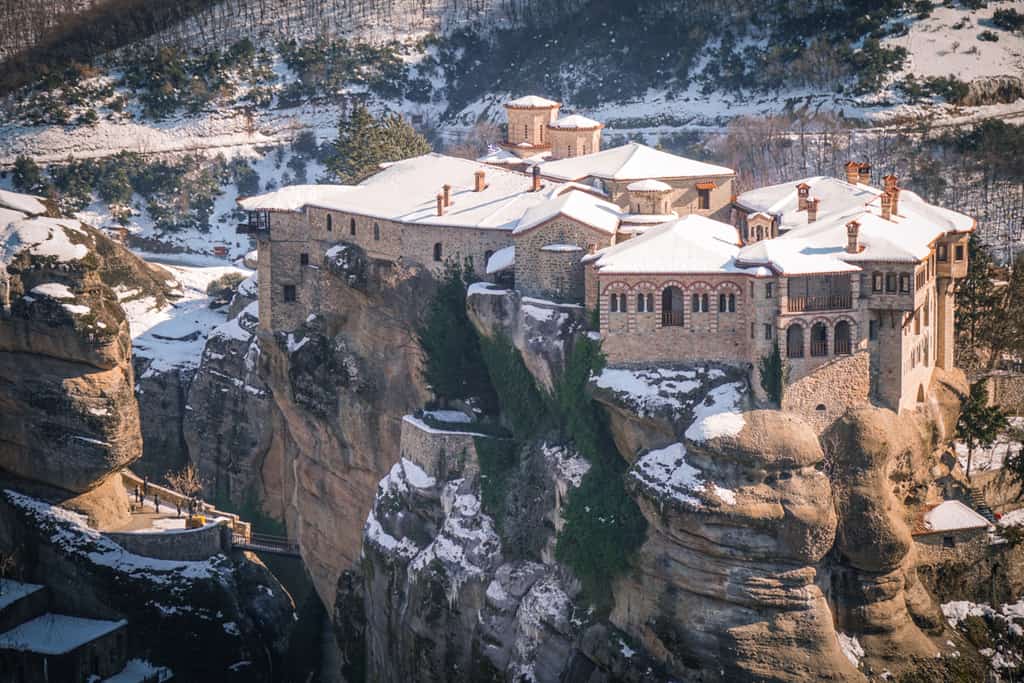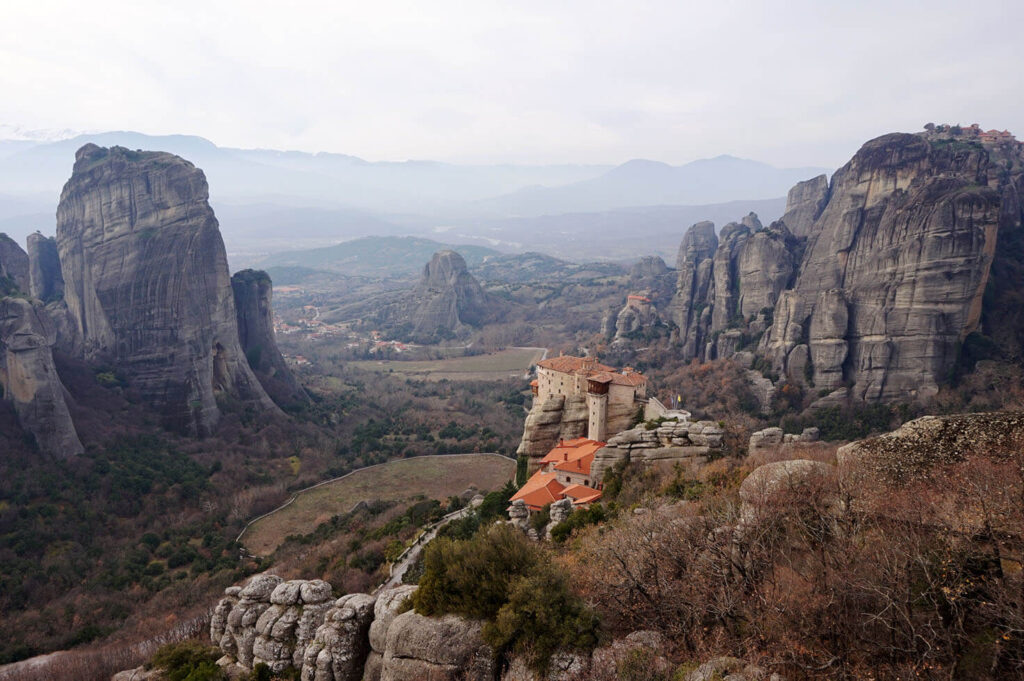The Meteora is a rock formation in central Greece hosting one of the largest and most precipitously built complexes of Eastern Orthodox monasteries, second in importance only to Mount Athos. The six (of an original twenty four) monasteries are built on immense natural pillars and hill-like rounded boulders that dominate the local area. It is located near the town of Kalabaka at the northwestern edge of the Plain of Thessaly near the Pineios river and Pindus Mountains. Meteora is included on the UNESCO World Heritage List under criteria I, II, IV, V, and VII.
The name means “lofty”, “elevated”, and is etymologically related to meteor.
History
Ancient history
Caves in the vicinity of Meteora were inhabited continuously between 50,000 and 5,000 years ago. The oldest known example of a built structure, a stone wall that blocked two-thirds of the entrance to the Theopetra cave, was constructed 23,000 years ago, probably as a barrier against cold winds – the Earth was experiencing an ice age at the time – and many Paleolithic and Neolithic artifacts of human occupation have been found within the caves.
Meteora are not mentioned in classical Greek myths nor in Ancient Greek literature. The first people documented to inhabit Meteora after the Neolithic Era were an ascetic group of hermit monks who, in the ninth century AD, moved up to the ancient pinnacles. They lived in hollows and fissures in the rock towers, some as high as 1800 ft (550m) above the plain. This great height, combined with the sheerness of the cliff walls, kept away all but the most determined visitors. Initially, the hermits led a life of solitude, meeting only on Sundays and special days to worship and pray in a chapel built at the foot of a rock known as Dhoupiani.
As early as the eleventh century, monks occupied the caverns of Meteora. However, monasteries were not built until the fourteenth century, when the monks sought somewhere to hide in the face of an increasing number of Turkish attacks on Greece. At this time, access to the top was via removable ladders or windlass. Nowadays, getting up there is a lot simpler due to steps being carved into the rock during the 1920s. Of the 24 monasteries, only six (four of men, two of women) are still functioning, with each housing fewer than ten individuals.

